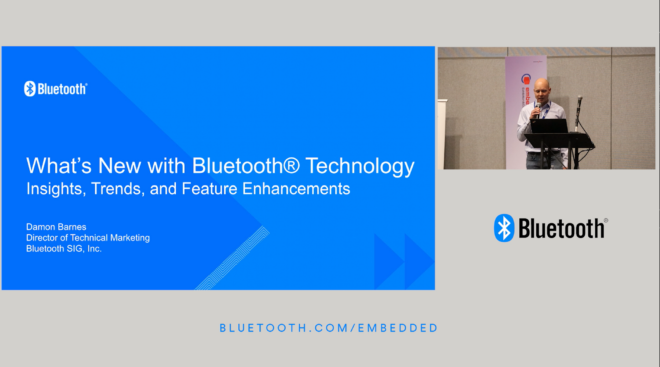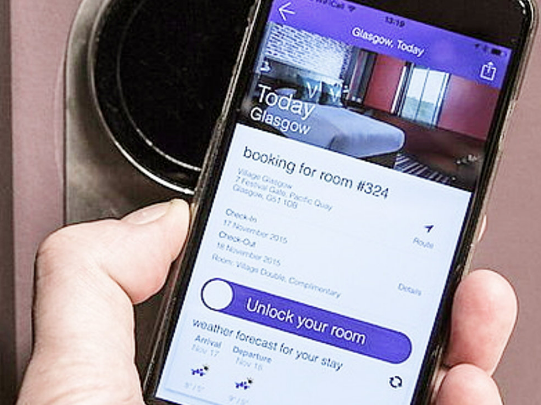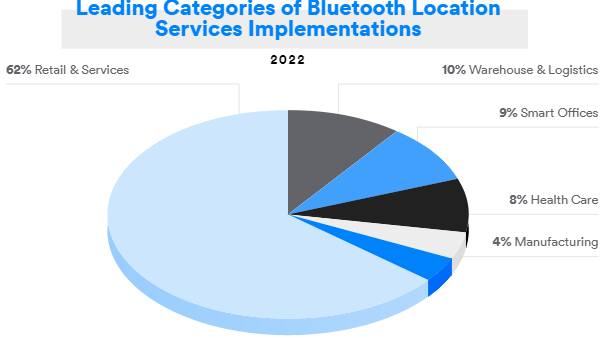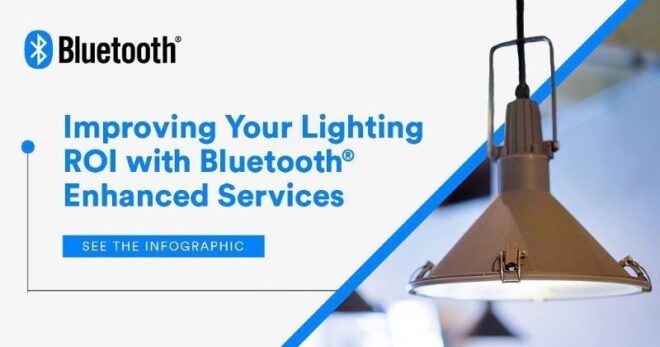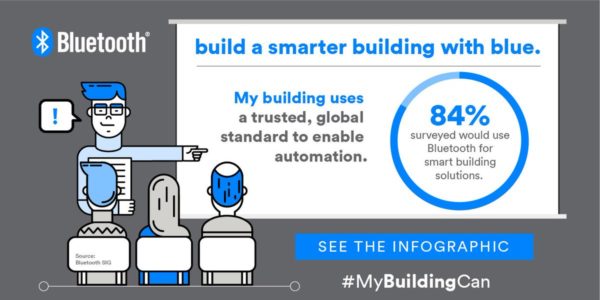Kontakt.io, a global innovator of indoor location services, serves more than 2,000 customers across diverse sizes and industries, leveraging Bluetooth® beacon technology to help better connect people, locations, and things.
I recently had an opportunity to talk with Rom Eizenberg, CRO at Kontakt.io, about how COVID-19 changed the way location services solutions are being implemented and the advantages Bluetooth Location Services solutions can provide in a post-pandemic world.
Q&A with Rom Eizenberg, Chief Revenue Officer at Kontakt.io
Indoor location services powered by Bluetooth® technology enables a broad spectrum of location-aware services inside buildings.
What does Bluetooth® Location Services enable for your company?
Indoor location services powered by Bluetooth® technology enables a broad spectrum of location-aware services inside buildings. Over the past decade, we have grown used to our smartphones being location aware. However, these capabilities do not work indoors, because GPS signals cannot penetrate buildings. Bluetooth enabled infrastructures, such as wayfinding beacons or Bluetooth enabled access points, makes it possible for smartphones to navigate indoors, for information systems to track high-value assets, and for building management software to collect data from sensors, over the air, connecting dozens of environmental systems to a single information pipeline.
These capabilities help us securely evacuate buildings in an emergency, optimize real-estate floor space utilization, and improve the employee workplace experience. We also use Bluetooth tags to track high-value lab equipment, increasing utility and reducing costs.
How has COVID-19 changed the way Bluetooth Location Services are being implemented?
Since the beginning of the COVID-19 pandemic, we’ve seen mounting demand for indoor location services. A recent PwC survey revealed that 78 percent of CFOs say that a focus for 2021 is reconfiguring office sites for remote working with 54 percent stating this will be a lasting change. The same survey identified 81 percent of companies as looking to use technology to improve workplace safety measures and requirements, while more than 73 percent of respondents reported a focus on technology investments to promote better operational resilience, agility, and workplace flexibility.
In this sense, what we are seeing in the market is companies accelerating previously under-budgeted digital transformation initiatives to address today’s COVID-19 response and long-term agility in how workflows and spaces are optimized for the company’s evolving needs.
Wi-Fi access point refresh cycles, for example, the upgrade for Wi-Fi 6 infrastructure, provide further opportunities for companies to achieve this vision by combining network updates with Bluetooth® gateway-as-infrastructure capabilities that are now available from network vendors, such as Cisco’s 91xx series access points and the DNA Spaces cloud offering, which our IoT solutions now support out of the box.
That’s why we frequently tell our enterprise customers looking at Bluetooth technology as an infrastructure that they might be much closer than they think. The combination of the trends identified above suggests that 2021 will see a rapid expansion of indoor IoT services, placing early adopters in a competitive advantage position across markets.
![]()
FEATURED
Bluetooth Technology Overview
See why Bluetooth® technology is the global standard for simple, secure device communication and positioning.
Can you talk more about a specific project your company has recently delivered or is currently working on that showcases the long-term benefits of implementing Bluetooth Location Services solutions?
In 2020, we started working with PostNL to help them digitize their internal roll-cage supply chain. By digitally quantifying the journey of a unique loading device (ULD), also known as a roll cage, we were able to provide better resolution in the tracking of a parcel’s journey and improve the quality of the information gathered at each step of the logistics chain. So far, PostNL has digitized 250,000 roll cages with Kontakt.io Bluetooth® beacons. PostNL is now able to track the location of the load unit since it is associated with the truck or facility where it was delivered. Roll-cage journeys between customers and depots can now be planned more efficiently. The critical decision PostNL took was to select Bluetooth Low Energy as the wireless standard. This made it possible for them to select best-in-breed vendors to deliver the required components united by a common language.
We will cover this project in detail during our webinar on 24 June 2021 with Sander Heije, product owner of IoT at PostNL. In this webinar, we will discuss how PostNL benefited from Bluetooth Location Services solutions and their path forward with Bluetooth IoT devices.
Why should technical decision-makers and product managers choose Bluetooth technology for their infrastructure?
Considering the IoT solution stack, one may identify three clear layers of technology interconnected together:
-
- IoT edge devices – from employee badges to patient wristband connected bracelets, asset tags, or room temperature sensors – all making up (typically) battery-powered, low-cost edge devices
- An infrastructure supporting localization of tags and phones as well as the aggregation of sensor data from the edge to the cloud application
- Software, covering the spectrum from IoT device management to data APIs to use case and sometimes vertical-specific applications across use cases
Of these three, it is the infrastructure that is the problem child of IoT. Or perhaps it’s better to say was the problem child of IoT.
With Bluetooth® enabled gateways in place…companies can go from paper and pencil to completely automated and hands-free quantified workflows (or buildings) almost overnight.
With Bluetooth® enabled gateways in place, and cloud technology available as standard, companies can go from paper and pencil to completely automated and hands-free quantified workflows (or buildings) almost overnight. It is the costly wiring and cable pulling that makes IoT beyond reach, driven by proprietary readers and custom solutions.
Recent announcements by network infrastructure vendors include Cisco’s Q4-20 news around their DNA-Spaces cloud and access point support for Bluetooth gateway in all-new Wi-Fi 6 access points. This trend allows technology leaders to leverage multiple strategic advantages, among them:
-
- A standard driven solution
- Solving for today’s use cases but keeping flexibility for the future
- Extracting building data from information silos, allowing IT to play a pivotal role in enabling future lines of business needs
- Cross-funding much-needed network upgrades with OT initiatives, unlocking not just lower cost of ownership but strong returns over network investment
We believe that Bluetooth technology plays a critical part in IoT enablement and delivers a unique value proposition that makes it a choice for the majority of location and IoT services: open standards, low energy, low cost, widely adopted, scalable, etc.
Bluetooth® technology also enables another important business metric — scalability. When a Bluetooth powered project is deployed, the option to scale it, almost infinitely, remains available using the same basic infrastructure, creating opportunities for savings while keeping up with business needs. It’s just much more than standard infrastructure, it’s an infrastructure that lets your business scale at almost no additional cost.
![]()
FEATURED DOWNLOAD
How Bluetooth Technology is Enabling Safe-Return Strategies in a COVID-19 Era
This report shares analyst’s insights into how Bluetooth® technology is being leveraged to help protect the safety of the public and workforces across many different environments.








